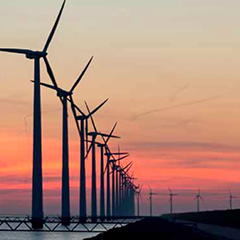The high cost of energy produced by offshore wind is the major contributing factor to the lack of cost competitiveness in certain world markets such as North America. Europe, however, has embraced a positive approach to subsidies, which has fostered an energetic market. We put the leading countries under the spotlight.
The main driver of cost for offshore wind, a technology where most of the spending is upfront, is the cost of capital to spread that upfront cost over many years. That cost of capital depends on several things: the required internal rate of return (IRR) of equity investors and their time horizon; the ability of the project to tap (cheaper) non-recourse debt; and in such cases, the leverage that can be reached, and the maturity of such debt. The average cost of capital is a weighted average of the cost of equity (IRR) and cost of debt (overall interest rate).
IRR can vary quite a lot, from 8%/year for operating assets to 15+%/year for pre-construction assets, while the cost of debt is typically in the 5-6%/year range.
Lowering the cost of offshore wind means implementing policies that: 1) maximize debt leverage (and, ideally, for the longest possible tenure), and 2) attract capital with lower IRR requirements. What is required is a simple and stable regulatory framework:
• Lenders are willing to take offshore wind risk, including construction risk, and provide medium to long term funding, but this requires a regulatory regime that (i) provides sufficient economics for the project, and (ii) is not subject to later changes in policy. They can typically provide longer (and cheaper) debt when there is limited price risk (i.e. fixed price PPAs, or FiTs, rather than pure market mechanisms, and guaranteed access to the grid). That needs to be in place at the moment of closing.
• Investors need to also consider the permitting and development phase in their thinking; they won’t invest development equity (in the tens of millions of dollars for offshore wind) if they have no idea of what the regulatory framework will be when the investment decision needs to be made, and if they have no idea of how long it will take them to get there (i.e. obtain all permits and approvals). The more uncertainty, the higher their IRR requirement.
Some of these issues (permitting notably) can depend on multiple regulators but all of them can be acted upon. Doing so is vital to reducing LCOE as the difference between a favourable regulatory framework (Germany) and a less favourable one (the UK’s ROCs), can be worth more than $20/MWh, or close to 20% of the overall cost, just from the difference in financing terms, for technically identical projects.





























